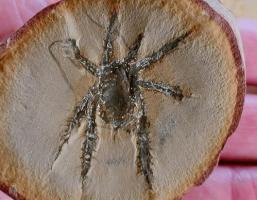Copy Link
Add to Bookmark
Report
HOMEBREW Digest #3045

HOMEBREW Digest #3045 Tue 01 June 1999
FORUM ON BEER, HOMEBREWING, AND RELATED ISSUES
Digest Janitor: janitor@hbd.org
Many thanks to the Observer & Eccentric Newspapers of
Livonia, Michigan for sponsoring the Homebrew Digest.
URL: http://www.oeonline.com
Contents:
To Dave Burley ("Jill and Phil Yates")
bittersweet success or a Victory of my own! ("Frederick L. Pauly")
Re: Reusing champagne corks ("J. Matthew Saunders")
H.B.D.: can we put H.S.A. to B.E.D.?/hot side aeration/oxidation ("Stephen Alexander")
Possibly answer to HSA in homebrew vs commercial (Joe Rolfe)
death of Hank's (Vachom)
Dextrin degradation, malty taste, sulfite, yeast and head, (Dave Burley)
yeast and head, Bauer's Bomb, covering the kettle prevents (Dave Burley)
malt bills/Kunze ("Stephen Alexander")
unappreciated brewers ... ("Stephen Alexander")
Re: Siebel, malt modification ("Stephen Alexander")
Inexcusable (AJ)
HBD Christmas Party ("Phil and Jill Yates")
Website Moved ("Alan McKay")
* Beer is our obsession and we're late for therapy!
* 2000 MCAB Qualifiers: Boneyard Brew-Off 6/12/99
* (http://www.uiuc.edu/ro/BUZZ/contest5.html); Buzz-Off!
* Competition 6/26/99 (http://www.voicenet.com/~rpmattie/buzzoff)
Send articles for __publication_only__ to post@hbd.org
If your e-mail account is being deleted, please unsubscribe first!!
To SUBSCRIBE or UNSUBSCRIBE send an e-mail message with the word
"subscribe" or "unsubscribe" to request@hbd.org.
**SUBSCRIBE AND UNSUBSCRIBE REQUESTS MUST BE SENT FROM THE E-MAIL
ACCOUNT YOU WISH TO HAVE SUBSCRIBED OR UNSUBSCRIBED!!!**
IF YOU HAVE SPAM-PROOFED your e-mail address, the autoresponder and
the SUBSCRIBE/UNSUBSCRIBE commands will fail!
Contact brewery@hbd.org for information regarding the "Cat's Meow"
Back issues are available via:
HTML from...
http://hbd.org
Anonymous ftp from...
ftp://hbd.org/pub/hbd/digests
ftp://ftp.stanford.edu/pub/clubs/homebrew/beer
AFS users can find it under...
/afs/ir.stanford.edu/ftp/pub/clubs/homebrew/beer
COPYRIGHT for the Digest as a collection is currently held by hbd.org
(Pat Babcock and Karl Lutzen). Digests in their entirity CANNOT be
reprinted/reproduced without this entire header section unless
EXPRESS written permission has been obtained from hbd.org. Digests
CANNOT be reprinted or reproduced in any format for redistribution
unless said redistribution is at absolutely NO COST to the consumer.
COPYRIGHT for individual posts within each Digest is held by the
author. Articles cannot be extracted from the Digest and
reprinted/reproduced without the EXPRESS written permission of the
author. The author and HBD must be attributed as author and source in
any such reprint/reproduction. (Note: QUOTING of items originally
appearing in the Digest in a subsequent Digest is exempt from the
above. Home brew clubs NOT associated with organizations having a
commercial interest in beer or brewing may republish articles in their
newsletters and/or websites provided that the author and HBD are
attributed. ASKING first is still a great courtesy...)
JANITORS on duty: Pat Babcock and Karl Lutzen (janitor@hbd.org)
----------------------------------------------------------------------
Date: Mon, 31 May 1999 20:22:43 +1000
From: "Jill and Phil Yates" <yates@flexgate.infoflex.com.au>
Subject: To Dave Burley
Dave,
I have just about had enough of this Phil character insisting he go
first whenever we write something so I have added him behind for a change.
He might not think so but I reckon you're a pretty neat guy. Just the way
you push this Pivo guy around and then admit to us all you are one and the
same personality. And of course you are so widely travelled, as you
mentioned. If I could get this Boof Head completely off my title
transmission I might just like to batter my big eyes and say "hey, why don't
you come and have a Mudgee Mud with me?"
Cheers Phil, no that's Jill, Oh where is my medication? Yates.
------------------------------
Date: Mon, 31 May 1999 08:03:03 -0400
From: "Frederick L. Pauly" <flp2m@unix.mail.virginia.edu>
Subject: bittersweet success or a Victory of my own!
Well, not exactly Hop Devil, but I finally got that wonderfull
bittersweet flavor I have been looking for. After hounding all of
you and the brewers at Victory and Jim Bush I finally got at
least close. It still lacks the strength of hop flavor and aroma
but I'm working on it. So here's what I did.
For 10 gallons
14.5 pounds Weyerman Light Munich
8.5 pounds Weyerman Pils
mashed at 152 for 90 minutes
Hops
first wort hopping 46 IBU Centenial pellets
30 min 5 IBU Cent, 11 IBU Tettnager, 5 IBU Cascade (leaf and
pellet)
15 min 14 IBU total cascade and Cent. leaf
off heat 3 oz each of cascade and Cent.
My total IBU calculation was 81
Now the yeast. I have been trying to get the flavor I want out of
the above recipe for about a year with out much success using
various Ale yeasts so this time I used WYeast Bohemian.
The OG was about 1.065 FG 1.010
It's at 5 weeks right now and tastes great.
Next time I would back off on the bittering hops just a tad and
put more in the middle.
Fermented at 40-45F
Well, thanks again to everyone that helped me on my quest.
Rick Pauly
Charlottesville,VA
------------------------------
Date: Mon, 31 May 1999 10:15:38 -0400
From: "J. Matthew Saunders" <saunderm@vt.edu>
Subject: Re: Reusing champagne corks
Rob Hanson asks about cork finishing beers:
The best way that I've found to cork finish a beer is to use regular
straight corks.
1) I cut the "mushroom" top off champagne corks that I use and discard the
bottom piece.
2) I soak the strait corks in a sodium metabisulfate solution overnight .
(I know that there is some difference in opinion on this forum whether this
practice works or not--but since I started sanitising my corks in this
fashion, I haven't had any belgian stuff infected in the bottle.)
3) I fill champagne bottles with beer and cork the bottles like you would
wine.
4) I put the "mushroom on top of the bottle and cage it down to the neck
of the bottle.
When I open the bottle, chances are I need a corkscrew, although I have had
bottles that the pressure between the two corks has essentially fused them
together hard enough to pull the cork our manually. When I use the
corkscrew, I uncage the beer and remove the "mushroom" pretty quickly.
Then I draw out the cork with the corkscrew. I HOLD ONTO THE CORKSCREW
TIGHTLY so it doesn't go flying through the room and hit someone in the
forehead.
This is the system I use. If anyone decides to try using it, do it at your
own risk--I am not responsible for any mis-hap that may come your way.
Cheers!
Matthew in VA soon to be brewin' in CO.
------------------------------
Date: Mon, 31 May 1999 10:33:45 -0400
From: "Stephen Alexander" <steve-alexander@worldnet.att.net>
Subject: H.B.D.: can we put H.S.A. to B.E.D.?/hot side aeration/oxidation
Jeff (Dr.Pivo) Irvine writes >can we put H.S.A. to B.E.D.?
Well, certainly farther back on the back burner (sic).
also ...
>I did a little 'spurment last year with "HSA".
Great experiment Jeff, *BUT* it failed to test the major premise. Many
pointed
out that oxidation damage may appear late and suddenly. The question
should be - does the HSA beer *eventually* suffer an earlier and severe
decline. Your 6-8 week aged beer experiment doesn't answer this.
- --
Jeff Irvine and Matthew Arnold both apparently missed the point of my (long)
follow-up question to Siebel re HSA.
Dave Radzanowski of Siebel wrote of HSA ...
>When you are required to ship large quantities for
>great distance and need to have very long shelf stability under conditions
>over which you have no control, then it becomes a factor.
I was attempting to pointed out that HB *may* sometimes be subjected to
equally long storage times and poor handling conditions. Mishandlings of
all sorts were being referenced here.
Jeff rejects that bottled and shipped homebrew even is homebrew:
>What you are talking about is "homebrew contests" and not "homebrewing".
Yet he also writes about his own difficulty controlling secondary temps
>This (when the secondary temp creeps up over the primary), empirically,
>leads to almost immediate "old barrel" flavours.
So beer, mishandled by bottling and shipping NOT HB while beer mishandled by
poor secondary temp control IS HB ? Utter nonsense Jeff !
No HB that I am aware of is continuously subjected to the sort of handling
standards as found at a local brewpub. Dr.Pivo demonstrates this himself
with his "spotty" cellar temperature control.
I suspect DaveR of Siebel (perhaps still) underestimates the travails of
*some* HB, tho' he may also be entirely correct in his low estimation of the
importance of HSA.
- --
Matthew Arnold writes about the same post ... Re: hot side
aeration/oxidation
>>(vorlauf) of about 50% of the mash liquor volume to get adequate clarity.
>Does anyone else recirculate this much? 50%!?!
There is a bit of hyperbole here, but 4qts is not unreasonable. We can
discuss the how and why offline. In a 4-5 gal batch ...
The point I was trying to make is that at HB scale the recirc percent is
about 100X of that seen at mega-commercial breweries. If you move your
mash from tun to lauter in a 'scoop' or by pouring, then you experience
most of the hot-side O2 contact I was describing - even with no vorlauf!
- --
>my initial run-off is stunningly clear.[...]
>my clarity also improved dramatically when I got my
>MaltMill (I previously used a Corona).
Which may effect your definition of 'stunningly clear' vs murky as well. At
the HB level we have no objective way to compare runoff clarity.
My note regarding clarity was about beer, not runoff (tho' related).
Just how long after pitching is it before HB beers approach commercial
levels of clarity. Probably 3-4 times longer for HB than for Mega-beers.
Time is the issue.
>>Because of the lack of finish filtration (and often slower fermentation),
>As far as clarity goes--two words: Irish Moss. Is this really that
>difficult?
Irish moss(IM) reputedly (and arguably and variably) impacts protein chill
haze and less certainly permanent protein haze. It is absolutely NOT a
functional substitute for cold finish filtration.
>As far as flavor goes, [...] I always like enjoying the flavor changes that
>occur in very young beer until it reaches it's theoretical peak.
Same here, *but* I'm almost always impressed with how much better my
ales taste at 2 months than straight out of the fermentor.
>>A quick review [...]] of HB winning national prizes [..] age range of 3 to
>>9 months [..] temperature control may be spotty.
>That's a rather large assumption to be basing a general truth on, isn't it?
?!!? You need to re-read the original post if you think I was declaring some
generalized truth. I was pointing out that HBs, may be commonly drunk at
ages of 3-9 months and that their storage control is not comparable to
commercial methods.
Look at Jeff Irvine/Dr.Pivo's recent note about shifting beer around in a
cool basement to keep the temperature in range, that is the HB practice of
"spotty" temperature control I was referring to.
>Here's the main issue in my mind. If you are a competition hound, then yes,
>you will need to be much more careful. Instantly the agitation,
>temperature, and other problems that arise with shipping suddenly
>apply to you.
There is a little truth here, but I mostly disagree. The fact that you can
sometimes get away with marginal brewing methods if you then carefully
handle the beer and drink it quickly is condoning sloppy methods that
are likely to show up in other ways or later in your 'non-competition' beer.
(see below)
>.For 90% of the homebrew produced in this country, this is a non-issue.
If pouring 10% of your beer down the drain is a "non-issue" - then I agree.
I think I've had 3 brews over the past 4 years that suffered from clear and
inexplicable oxidation damage changes. I spoke this weekend with a brewing
friend who has won top national awards yet has a kegged brew that he
referred to as "liquid cardboard". If you think it cannot happen to you -
you are whistling in the dark. If you drink all your beer by week 6 then
you
probably have little to fear, but I don't think I'll enjoy your barleywines
or
lagers.
>P.S. I hope this doesn't sound like a slam against Steve.
No offense taken at all Matt, nor mean - sincerely.
>But I believe that HSA is one issue where homebrewers need to apply
>Charlie P.'s mantra.
You should only 'worry' (in the positive sense of exerting control) over
things
you think are important and that you can effect. That is a generalized
truth.
It doesn't pay to become so 'anal' about a hobby (or a job) that it loses
all
enjoyment. On the other hand it also doesn't pay to accepting poor brewing
practices just because you seldom see a major problem.
I and others have posted on beer, which after drinking well for weeks or
months - in a keg, then over just a few days shows significant oxidation
damage. Search the archives - many such reports. As I noted in my post,
HSA may not the ultimate culprit, *BUT* damage constant with oxidation is a
well known and not uncommon HB problem. Siebel's statement that the
source *PROBABLY* isn't HSA, just widens the mystery.
Kunze (pp211) writes of "oxidation during mashing" that air uptake,
for example by mixing results in:
- darker wort and beer
- a less refined beer flavor
- decreased flavor stability
.
>>still sleeping uneasily,
>Get some rest, Steve. This is one bogeyman that's not worth losing any
>over.
If Matt or Jeff (Pivo) would just explain what non-HSA source of
oxidation is causing the damage ... then I might sleep that sleep that
"knits up the raveled sleeve of care", Till then it's "Double, double toil
and trouble; Fire burn, and cauldron bubble".
Sorry to not answer Matt's issues in more detail, but 8k is enough
on the topic.
I'm perfectly happy to accept the Siebel statement (thankfully Dave R of
Siebel clarified his meaning) that HSA is much less of a concern than post
fermentation oxygen contact (which is horrific). The experience and
judgment supplied by Siebel staff is precisely what cannot be easily gained
from textbooks, nor from single point experiments. Posts by Siebel overall
were wonderful, and I sincerely appreciate the time and effort taken to
respond to our questions.
-S
------------------------------
Date: Mon, 31 May 1999 10:39:26 -0400 (EDT)
From: Joe Rolfe <onbc@shore.net>
Subject: Possibly answer to HSA in homebrew vs commercial
just one idea why it appears to be an issue in a smaller brewery:
the total volume aerated is much larger in a small brewery. if your doing
the hot wort directly into the fermenter you getting 100% of the volume.
same applies if you transfer the mash.
in a large brewery it is smaller percentage of the whole and is limited
to the amounts to fill the runoff pipe, the bottom of the kettle, and
the piping to the wort chiller. if it aproaches 10% of a larger brewery
i'd be surprised. similar for the mash side, but usually not too much
mucking around with the mash is done.
thanx to the Siebel folks - class act.
------------------------------
Date: Mon, 31 May 1999 09:59:13 -0500
From: Vachom <MVachow@newman.k12.la.us>
Subject: death of Hank's
In HBD #3044 Tim mourns the death of Henry Weinhard's, swallowed
whole by the gigantic real estate/brewing concern that owns Miller Beer.
Tim, the closing of the brewery that made Hank's is the necessary result of
Miller's recent acquisition of Stroh's. Someone correct me if I'm wrong,
but I believe that Henry Weinhard's was not a craft brewery product at all
but a Stroh's brand name. The Miller acquisition of Stroh's will also
affect Boston Brewing which had contracted with Stroh's to produce a
considerable portion of its flagship beer. At the time of the purchase,
there was considerable concern that Miller which would unquestionably hike
the contract value considerably, leaving Boston Brewing to either pony up or
find someone else with whom to contract. But then, what brewery has that
kind of capacity that is not either owned by or has as its major investor
(Redhook, Shipyard) one of the mega-brewers? As Bill Siebel mentioned in his
#3036 post, packaging craft brewers are now and will continue to repeat in
miniature the recent history of the mega-brewers, that is, buying each other
up, consolidating to save costs, contracting with mega brewers, etc.
The positive spin on this trend is that the consistency and quality
of craft brewed beer is bound to go up. The flip-side? Narrowing of style
choices, the death of your favorite regional, the fact that the $6 you shell
out for a six of craft brew is no longer going to your next-door-neighbor
who bagged his corporate job to follow his dream of brewing beer but to a
more faceless operation with its headquarters in Tampa. In the future
you'll have to get your winter ale and your "support-locally" fix at the
brewpub which might still be owned by your neighbor; then again, it might be
owned by Archer Daniels Midland.
Mike
New Orleans, LA
------------------------------
Date: Mon, 31 May 1999 12:16:34 -0400
From: Dave Burley <Dave_Burley@compuserve.com>
Subject: Dextrin degradation, malty taste, sulfite, yeast and head,
Brewsters:
David Humes asks about using dextrin malts versus
modifying the mash conditions. I know your question
was directed to Siebel, but their question period is
over for a year and I do think it is a valid area for discussion.
So, I hope you don't mind if I start this discussion.
I and, I think, AlK have puzzled over this on more than
one occasion either here or offline. If I use these
specialty malts which have been fully saccharified
( like crystal and dextrin malts) I often add them at
the end of the mash to avoid untoward modification
of them by the mash enzymes. This is one good
reason to "mash out" to guarantee the beta amylase
is gone and the alpha amylase is reduced in concentration.
I do not know how these malts are used commercially,
although, I know commercial brewers tend to not make
multiple grist additions. Therefore, I presume the
effectiveness of these specialty malts will be dependent
on the specific grist and mash program. For this
reason, when I only make one grist, I tend to think of
these specialty malts only for providing flavor
( crystal - caramelly flavors, dextrin - biscuitty
<or is it malty?> flavors due to the higher kilning) and
let my mashing program take care of the dextrins
or else use them in single infusion mashes.
- -------------------------------------------------
On the subject of "malty" flavors: I tend to think of
the malts which have been more highly kilned, but are
still pale-ish in color to offer the most malty flavor.
Munich malts are on the outside edge of what I call
malty, since other flavors from the higher kilning
tend to cover up the malt, IMHO. Cut the kernel
to judge the color. The color rating helps.
- ------------------------------------------------
Bill Frazier asks about using sulfite in beer to
improve its (bacterial?) stability due to the
lower alcohol content he desires.
At beer pHs, sulfite is ineffective as a
anti-bacterial preservative. I know it has been
against the law for many years to add sulfite to
beers. Presumably, the higher volumes of beer
ingested versus wine, the carbonation of beer which
prevents the loss of sulfite on pouring and perhaps
the potential for serious allergic responses are the
reasons dictating against its use.
- -------------------------------------
Ron Hansen asks about corking Belgians. I just
partially insert a wine cork. Works fine and the
upper section expands a little, so it is nearly
similar to the real thing.
HB shops have the champagne cages.
- --------------------------------------
Keep on Brewin'
Dave Burley
------------------------------
Date: Mon, 31 May 1999 12:16:47 -0400
From: Dave Burley <Dave_Burley@compuserve.com>
Subject: yeast and head, Bauer's Bomb, covering the kettle prevents
Brewsters:
Dr Pivo, Siebel and I have made the same observation
concerning yeast and head quality. All of my naturtally
kraeusened ( using my starter kraeusen method -
see archives) kegs give much better quality foam
and lace down the side of the glass measuring each
sip (or gulp!) with accuracy. I believe it is a physical
phenomenon.
Since often the same yeast are involved, I presume,
like Dr. Pivo, that the yeast load is the important factor.
I suggested a few years ago when I reported it here
in the HBD that this was due to the fact that the yeast
may serve as nucleation sites for the gas bubbles and
the more yeast in the beer, the more and finer the foam.
Kraeusening should leave more yeast in the beer.
There does seem to be some optimum, however, as
really yeasty beer seems to blow off quickly without
a lot of head, in my experience.
I also observe that this phenomenon
will be yeast dependent to some extent since the
flocculation rate is yeast dependent. It will also be
dependent on post fermentation treatments like
filtering, lagering, kegging vessel size and time.
This might be an interesting experiment for those
equipped with light scattering apparati to evaluate
this using some ASBC foam stability testing protocols.
Siebel?
- -----------------------------------------
Harlan Bauer's use of a Sanke keg and a mechanical
regulator to make a 15 gallon pressure cooker
scared the crap out of me when I read it.
Foamy wort ( not plain water) can clog the pressure guage
and the mechanical pressure controller with continued use.
Unfortunately, there was no provision for the inevitable
pressure override which even simple, commercially
built pressure cookers ( of MUCH smaller volumes
and MUCH thicker walled vessels) have.
Even though they have a mechanical controller, they
also have - a < non-mechanical> fusible link which
will blow when the temperature ( read steam pressure)
gets too high. You have no such provision and it is nearly
impossible to cool off a large volume vessel
quickly enough to avert any damage. Controlling the
pressure by adjusting the heat just won't do it reliably.
Besides, to do so you would have to be there to do it.
I would be running the other way and around the
house to get some schrapnel protection.
The nature of the heating of these Sanke kegs
is uneven at best and they are not necessarily
tempered to be recycled over these temperature
ranges. What happens to the pressure rating
( only a 4 atm rating, at best, according to Harlan.
This is less than a champagne bottle!)
at these temperatures? I don't know, but I can
guess. Even though I assume you are doing this
outside, I think this is an extremely dangerous
practice and I implore you to stop it.
If you have ever seen the results of a
pressure vessel or pipe blow you will
understand just how foolish this practice is.
Unfortunately, I once saw the results of a pipe
driven through a worker by a reaction which
got out of control. His family was left fatherless.
Why do you need ten gallons of sterilized wort
anyway?
- -----------------------------------
Alan in Baltmore, I always boil with my kettle
partially (in fact, almost completely) covered
so that there is a steady jet of steam to
guarantee no air is getting in. I always wait to
do this after the first boil-up, however.
Typically, I have it covered about 3/4 to get
to the boil more quickly, but so I can see how
it is proceeding, remove the lid as surface
action and foam rise and then cover it when
the foaming subsides. This does prevent oxidation,
which can take place during the boil, despite
the solubility of oxygen argument. If you don't
believe it, check out the darkening of the foam
and beer with time on an uncovered kettle.
I have tried also makling a large cone from aluminum
foil to emulate commercial kettles and produce a
real jet of steam out the top. It worked fine, but
I was unable to see the surface of the boil and it was
just too much fussing for the marginally better result.
Keep on Brewin'
Dave Burley
------------------------------
Date: Mon, 31 May 1999 12:14:11 -0400
From: "Stephen Alexander" <steve-alexander@worldnet.att.net>
Subject: malt bills/Kunze
Kyle writes,
>Oktoberfest, Munchner (dunkel), and Bock. I am not going to spend $100+
for
>a book where all I want are the recipes. Would you, or someone else who
has
>the book, please post a few of the malt bills, thanks.
Kunze is not a recipe book, but contains tons of practical and authoritative
brewing info. Well worth the money IMO. The AHA brewing series books are
relatively cheap, but less authoritative and some of them are quite dated.
The complete Narziss reference is probably available from the Brauwelt
website for a few bucks as a reprint the reference is: Narziss, L.,
Brauwelt 6(1990), S 178-184.
The immediate answer is that Kunze/Narziss shows the following malt bills:
(Dark Malt = Munich Malt)
(Pale Malt = Pils Malt)
(Coloured Malt = dark roast malt)
Dunkel 50-60 EBC:
Dark Malt (15EBC) 90%
Pale Malt (3.5EBC) 9%
Coloured Malt 1%
-or-
Dark Malt (15EBC) 40%
Dark Malt (25EBC) 40%
Pale Malt (3.5EBC) 14%
CaraDunkel (120EBC) 5%
Coloured Malt 1%
-or-
Dark Malt (15EBC) 50%
Bruhmalt (35EBC) 30%
Pale Malt (3.5EBC) 19%
Coloured Malt 1%
====
Marzen (March Beer/Munich) 30EBC:
Vienna (5.5EBC) 90%
Pale Malt (3.5EBC) 10%
[CaraHell (25EBC) 10% optional ]
-or-
Dark Malt (15EBC) 70%
Pale Malt (3.5EBC) 30%
[CaraDunkel (120EBC) 5% optional]
-or-
Dark Malt (15EBC) 50%
Pale Malt (3.5EBC) 30%
Bruhmalt (35EBC) 20%
-or-
Dark Malt (15EBC) 100%
I'll take responsibility for any typos; you can do the EBC to SRM conversion
yourself.
===
No comparable Bock/Doppelbock info, tho malt bills for 6 other styles are
listed. Kunze contains further info on approximately 21 styles in chapter 7.
Color, attenuation expected, storing and serving info - for example he notes
a lighter and darker variant of Marzen. Reproducing all of it all here
would be unfair to the publisher and author. Hopefully the above
educational excerpt will whet your appetite for a very good practical
brewing book.
Commercial Marzens like Spaten and Paulaner have a bigger dark caramel note
than I personally prefer. Some Munich malts are better at reproducing this
than others, but note the CaraDunkel and Bruhmalt options above too.
happy brewing
-S
------------------------------
Date: Mon, 31 May 1999 11:08:49 -0400
From: "Stephen Alexander" <steve-alexander@worldnet.att.net>
Subject: unappreciated brewers ...
Rob says,
>My fury is directed to the generally sorry state of our industry, that to
>this date, continues to allow brewers to be lured with promises of 5.25
>dollars an hour...(it is a real occurrence).... and with the understanding
>that they are no more valued than the next dishwasher......
...
>......"Christ, I can get anyone to brew!
>Just turn that valve, and follow this recipe...."
...
>Brewing is a lot of process...no doubt....but the art is what no one
>appreciates..
I agree. I know a handful of professional brewers who have given up much
more lucrative careers in order to brew (one from our own HBD midst). They
do so for love of the craft, not money and I applaud their courage and
willingness to follow their dream. Life is ultimately about experiences and
relationships, money, at least for someone with real goals and decent
values, is just a tool, and sometimes an impediment.
Why are brewers so unappreciated ?
My highly condensed response is:
1/ that their products are often not unique or the brewers best work. I've
had enough "golden lagers" and mediocre ales to know that brewpubs make
these for the local "Bud", or "I don't really like beer' segment of the
market.
2/ Most brewpubs and even Micros distribute only regionally so there is
little opportunity for a "high-end" beer to find it's way to the
appreciative glasses of enough discerning beer drinkers and develop a
following.
3/ 'Food service' attitudes and management usually pervade brewpubs. This
means minimum wage and high turnover are often in the mix. Professionally
trained chefs do no better than brewmasters in brewpubs.
4/ Name recognition for the brewer is impossible if his name isn't on the
beer menu and label (a few are). The beer press and writers (M.Jackson
included) also do a very poor job of spotlighting the brewer.
It is interesting that winemakers, that is the technical vintners of high
end California wines for example, have none of the above problems and often
achieve a national or international level of recognition. They work in a
lower margin business, yet are probably paid a bit better and no one would
consider replacing them with a "dishwasher".
There are some precedents for micros focused on a particular 'high-end'
style, and distributing widely to acquire enough of their focus market.
Celis Wit and Pierre Celis, Unibroue outside Montreal, with their
magnificent and unique style and a little better distribution this place
could be much bigger, Anchor Steam and SNPA certainly represent a focus on
a limited style with wide distribution. Other classic styles also have
great potential for US production and national marketing. I know of some
absolutely great US lagers and weizens in local production, but I also can't
often afford to travel 100+ miles just to get a beer I happen to like.
These guys are missing their market by not distributing more widely.
The other "beer" problem is image and education. It wouldn't hurt if the
image of the beer drinker was more like that of a wine drinker rather than
like Homer Simpson - can of Duff beer in hand. Beer education has a long
way to go .. I think the 'rotating' popularity of certain wine styles has
helped people recognize the differences. Would be nice if the beer industry
could get a buy-in from a lot of micros and brewpubs to 'push' some seasonal
styles of beer nationwide. Maybe two appropriate styles per quarterly
season. I think it would help both the image and education problem.
-S
------------------------------
Date: Mon, 31 May 1999 14:45:25 -0400
From: "Stephen Alexander" <steve-alexander@worldnet.att.net>
Subject: Re: Siebel, malt modification
I am copying Christopher of Siebel on this, tho I do not expect an answer.
The deadline is passed, and the generosity of the Siebel staff in answering
our questions to this point is extremely generous and well appreciated.
Perhaps next year ...
Christopher of Siebel writes ...
>That said I would dare anyone to compare a base malt
>grown and malted in North America to one from Europe
>and find them similar.
Dare taken - See below
>What specifications would reveal modification?
>Acrosphire growth, Diastatic Power, Soluble Protein, FAN, Friability?
>Once conversions between the different systems of reporting this
>information i.e. ASBC vs. EBC have been taken into account, I'm sure
>you'll come to the realization that German Malt in particular, and we're
>talking a base malt (2 row etc.) contains a higher percentage of HMW
>material.
In comparing 'Briess two row brewers', 'Schreier Two-Row Pale', 'Durst
Pils', 'Weyermanns Pilsner' and 'DeWolf Cosyns Pilsen' I come up with only
partial data on each. No acrospire length data published, and friability
(Durst - 88%, 80-90% for Weyermanns Pils) has no comparison points for US
malts that I can find. Scotmalt - a well modified english style malt comes
in at 90-92% friable as a somewhat distant point of comparison. I also have
no direct figures on FAN, tho many on the related factors of soluble
nitrogen & protein.
The Diastatic power of the 2 US malts give ranges of 110-140L , while the
German and Belgian entry are 70-100L. Note the not only the malt
germination, but also the kilning and the different barley varieties and
their protein levels have an impact on this number. The Durst alpha-amylase
figure is a notch lower, but the DWC is very much inline with Schreier and
Briess. I would expect Alpha-Amylase to be somewhat less kiln sensitive.
The US entries had total protein from 11-12%, soluble protein from 5-5.4%,
and a soluble/nitrogen ratio of 44-45%.
The German/Belgian malts were listed at 10-11.5% 4.1-4.8% and
42.9-46%.Kolbach(Sol/Tot ratio).
In all I'd have to say that the euro malts have a significantly lower total
protein level (~10% diff) which is a barley grain property, but the
percentage that has been degraded into solubility during modification is
very similar, (or perhaps just slightly less excluding the Belgian DWC).
The Kolbach (soluble nitrogen to total ratio) ratings of 42.9-46% don't come
close to matching the figures one reads about in traditional decoction
brewing for undermodified malts of Kolbach's in the mid to high 30's.
German malts - lower diastatic power, lower total protein, similar
percentage of total nitrogen modified to solubility. That's how I read
these limited figures.
I find it hard to interpret this data as saying that German malt is
significantly less modified. It may well contain more HMW protein than the
US product, but the demonstration is not in these numbers. Looks to me like
euro malts have less of all protein but very comparable percentages are
degraded to solubility during modification.
Figures are from several sources, esp 'Brewing Techniques 1997 Market Guide'
and the websites of the various maltsters.
-S
------------------------------
Date: Mon, 31 May 1999 19:05:34 +0000
From: AJ <ajdel@mindspring.com>
Subject: Inexcusable
George Fix closed his post in #3044 with
"On a more serious note, I sincerely do wish everyone associated with
HBD well. In spite of the occasional invective HBD is a good discussion
group,
and I am sure it will flurish [sic] in the years to come."
I note with some sadness and confusion that much of the preceding
material was given to an ad hominem attack the likes of which I have
never seen in HBD and of which I am the subject. This was apparently
based on a thread of "reasoning" deriving from remarks I made in #2999
(8 April 99) about an article he wrote in BT. I ask that readers refer
back to this post and let me know if it contains the "ranting /
venting" of a writer "stressed out about many things". If you think so
please let me know.
Ordinarily I try to avoid ommenting on situations of this sort which
really don't do much towards advancing the value of this forum but when
Fix writes "I have no idea how this gentleman reacted when he heard the
news, but my only reaction was a deep sense of gratitude that these
competitions are judged blind!" he publicly
impugns my integrity. For this offense against gentlemanly conduct he is
a rascal and a scoundrel. There were times in western society when such
actions led to most serious consequences (perhaps Galois will be
recalled). I don't believe that they should be taken lightly even today.
Thus, distressing though I find it, I must, as a gentleman take two
actions:
I. Demand an immediate apology in this forum. This will test whether
George Fix retains the right to be called "gentleman" henceforth.
II. Set the record straight.
I was, in fact, quite certain that the beer in question was Fix's. In a
flight of 12 "Bohemian Pilsners" it was the only one with any Bohemian
character whatsoever. There were some damn good German Pilsners in there
(and some dogs). When you are pretty sure that George Fix has entered
this category (because he has done so in preceding years) and you only
have one beer that meets the guidelines, it's quite easy to guess whose
it is (this kind of guessing is called "maximizing the a-posteriori
probability" in my profession). It took some work on both the flight
judges and the advancement panel to get this beer promoted (one judge
didn't like it, period. The advancement panel thought the phenols were
too high) and sent on to best of show and I was, in exact opposition to
Fix's supposition, the advocate because I thought his beer was the beer
that best represented the style. I don't care if the beer was brewed by
Slobodan Milosovitch (or George Fix against whom I had nothing before
this morning either). I will always carry out my responsibilities as a
judge with integrity. To suggest otherwise on such a flimsy basis is
inexcusable.
I apologize to the readership for taking the space for this necessary
message.
A. J. deLange
Numquam in dubio, saepe in errore.
------------------------------
Date: Tue, 1 Jun 1999 06:33:07 +1000
From: "Phil and Jill Yates" <yates@flexgate.infoflex.com.au>
Subject: HBD Christmas Party
I know it's a ways off but we better start thinking about this. We might be
able to talk Fouchy into opening the BentDick brewery as the venue. It's a
long way to travel but I'm looking forward to seeing Kyle perform for us in
drag, no disrespect there Kyle. And if I get this recipe worked out I can
bring along some Mudgee Mud for all to try. Then you can send me home with a
big note pinned to my back reading "Bloody Awful".
Cheers Phil Yates.
------------------------------
Date: Mon, 31 May 1999 16:36:09 -0400
From: "Alan McKay" <amckay@nortelnetworks.com>
Subject: Website Moved
Hi folks,
I have my own domain name now, so I've moved my website over
to http://www.bodensatz.com/
The old pages are all still in place, but the text has been
replaced with nothing but a pointer to the new site.
If anyone finds any problems on them, please let me know.
thanks,
-Alan
- --
Alan McKay
OS Support amckay@nortelnetworks.com
Small Site Integration 613-765-6843 (ESN 395)
Nortel Networks
Internal : http://zftzb00d/alanmckay/
External : http://www.bodensatz.com/
All opinions expressed are my own.
------------------------------
End of HOMEBREW Digest #3045, 06/01/99
*************************************
-------




















